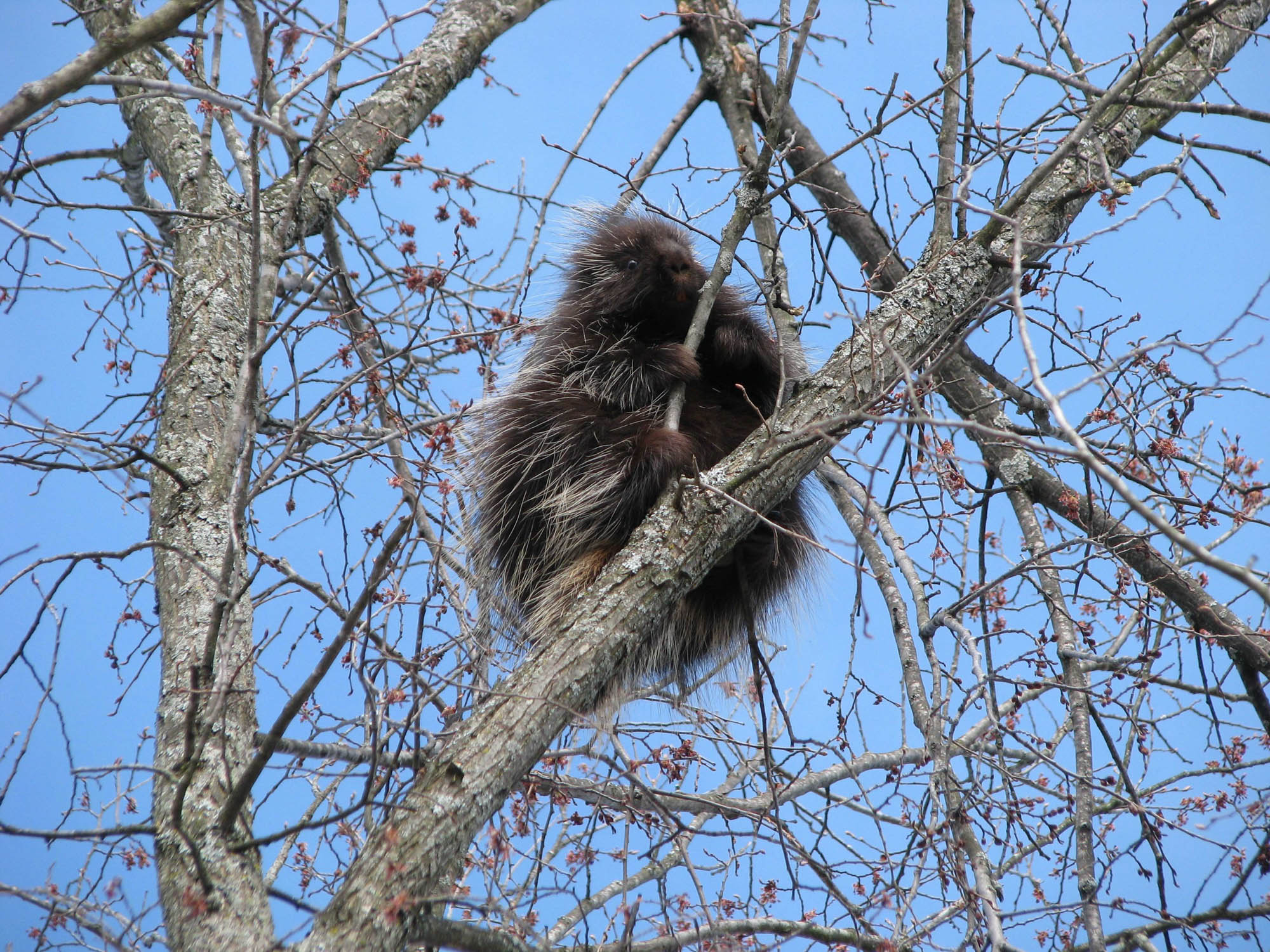
Animal damage to trees
Nuisance to Damaging
Damage to Trees
Damage is easily noticed on the bark. When the inner bark is damaged, the tree cannot move water and nutrients from the roots to the branches and leaves. Minor damage does not heal, but the tree may grow a seal of tissue over the wound. For minor damage:
- If you don’t know which animal is damaging your tree, mount a camera to catch them in the act.
- Do not apply pruning paint to bark wounds.
- Prune off badly damaged branches as needed.
- If you use any kind of barrier or trunk wrap, remove it after one season to prevent bark damage.
- Monitor your tree and keep it well watered.
Severe damage is not reversible and can kill a tree. Girdling is when animals chew all the way around the trunk. When this happens, the entire tree above the girdled line will die. Once this happens, you need to cut down the tree. Generally, as the top dies back, the tree will begin to send up prolific suckers from the underground roots. You can either remove these suckers on an ongoing basis until the tree uses up its underground resources, get the roots removed to prevent sucker growth, or allow the suckers to grow to replace the downed tree. If you decide to allow them to grow, make sure you prune them regularly or they will grow into an oddly shaped shrub. Mice are especially bad for girdling trees so keeping control of your mouse population will go a long way towards preventing expensive girdling issues.
Mice are pretty sneaky and tend to do much of the damage to bark in the winter when alternate food sources are more scarce. They will create above ground tunnels beneath the snow surface to move from your tree to their homes throughout the winter, which will also impact the health of your grass. For more information on mice and vole control, see our Mice and Voles guide.
|
Animal |
Damage |
Control |
|
Squirrel |
Bark stripping or gnawing. |
Install 2’ wide metal flashing around the tree trunk, 5’ off the ground. Install funnel-shaped guard around tree, 5’ off the ground. Humane trap – release in another area. |
|
Rabbit |
Girdling damage in winter above the snowline. Gnawing on shoots and buds. |
Exclude rabbits with mesh fencing around the trunk. Flexible plastic tree guard. |
|
Mice, voles |
Girdling damage in winter near ground level. Damage is found below the snowline or mulch if mounded around the tree. Tend to feed on young trees. |
Pull mulch well back of the trunk to discourage burrowing. Remove other sources of food. Use mousetraps. Flexible plastic tree guard. |
|
Porcupine |
Girdling damage, especially young trees. Chewing on of small upper branches. |
Install 2’ metal flashing around the tree trunk. |
|
Sapsucker (protected species) |
Multiple small, oval to square holes through the bark to the sapwood. Holes are regularly spaced in horizontal rows. Birds feed on sap. |
Loosely wrap burlap around trunk between April and late summer. Place shiny objects or noisemakers in or near your tree. |
|
Woodpeckers (pileated, downy, flicker etc) |
Large, irregularly spaced and rough-edged holes. Birds feed on insects under the bark. Damage tends to be high up in the tree. |
Place shiny objects or noisemakers in or near your tree. |
|
Deer |
Browsing damage to tips of branches and on the bark. |
Exclude deer with fencing. Netting may reduce damage to small shrubs. Flexible trunk wrap. Commercial deer repellants. |
Sources
Bourne, J. (2005). Control of porcupine damage. Government of Alberta. https://www1.agric.gov.ab.ca/$department/deptdocs.nsf/all/agdex3470/$file/684-11.pdf?OpenElement
Chaney, W.R. (2015). Why do animals eat the bark and wood of trees and shrubs?. Purdue University. https://mdc.itap.purdue.edu/item.asp?itemID=19436
Government of Canada. (2020, January 24). Yellow-bellied sapsucker. https://agriculture.canada.ca/en/agricultural-production/crop-protection/diseases-and-pests-agroforestry/yellow-bellied-sapsucker
Government of Canada. (2020, January 24). Protecting trees from animal damage. https://agriculture.canada.ca/en/agricultural-production/crop-protection/diseases-and-pests-agroforestry/protecting-trees-animal-damage
Government of Canada. (2013, June 24). Moles and voles. https://www.canada.ca/en/health-canada/services/pest-control-tips/moles-voles.html
Swift, C.E. & Gross, M.K. (2021, February). Preventing deer damage. Colorado State University Extension. https://extension.colostate.edu/topic-areas/natural-resources/preventing-deer-damage-6-520/
Washington Department of Fish & Wildlife. (n.d.). Living with wildlife: Tree Squirrels. https://wdfw.wa.gov/species-habitats/living/species-facts/tree-squirrels

